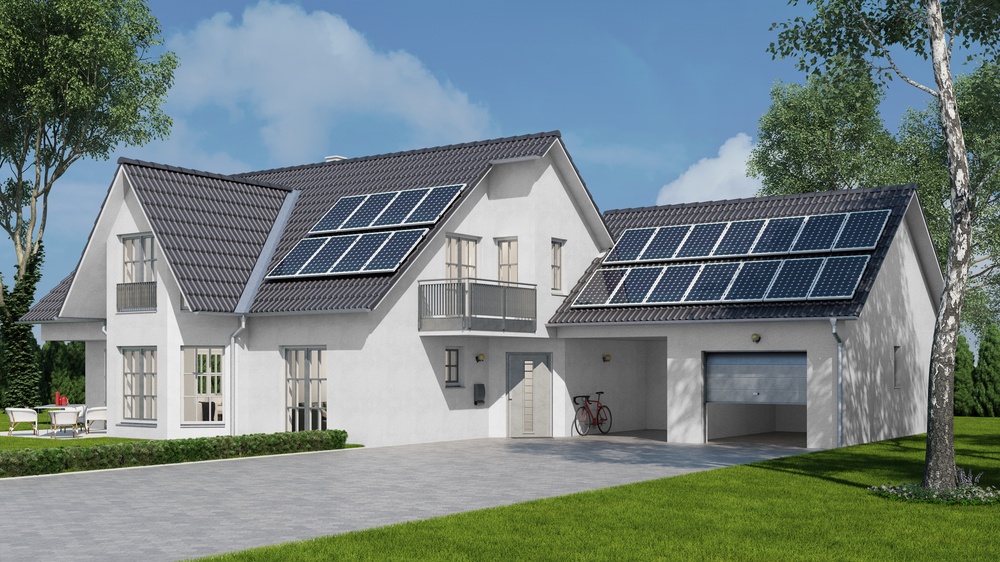
The sun is one of the very few renewable energy sources available to us. This explains the immense popularity of solar panels. But will solar panels be profitable for your home if you don’t live in an area with an abundance of sunshine?
The short answer is that solar panels can be profitable, presuming that you’ve done the proper groundwork and make decisions based on knowledge and research. This article intends to provide you with some insight and guidance along the way.
Solar Panels: A Long-Term Investment
Solar panels typically last 30 years, usually come with a warranty of at least 20 years, and require little to no maintenance. If you live close to the Mediterranean, you can expect to do some manual cleaning of the panels, as there is a lot of dust circulating, combined with scarce rainfalls. If you live in an area with regular rain showers, there is probably no need to clean the panels.
Solar panels are self-sufficient and provide a steady electricity production for your home. The inverter is the box that converts the electricity from the solar panels to AC power usable in your home. The inverter is replaceable and most likely need to be renewed during the installation life time.
With the price development on both electricity, grid tariffs and solar panels the market shows that solar panels even in Norway is a profitable investment over the same liftetime compared to depositing the same amount in a savings account with your bank, and represent a competitive pension saving option. I will further explore how you can maximize your solar installation profitability.
Earn Back Your Investment in 10-15 years
Do you plan to sell your energy surplus back to the grid, or do you want to consume it? Let’s look at how you can approach this question.
Start by considering how you use electricity throughout a day, specifically what you use electricity for. Most likely you own some of the following electricity-devouring devices:
- Heat pump
- Water heater
- Ventilation system
- Electrical floor heating
- Refrigerator
- Deep freezer
- Washing machine
These appliances are in constant need of electricity and require substantial power.
If you dimension your solar panel system for the needed power, and preferably about 30% more, you can rest assured, knowing the electricity you produce will be used for your ongoing consumption. Other energy-demanding appliances, such as washing machines and dishwashers, can be programmed to start at a set time of the day, allowing you to have a dishwasher full of clean dishes by the time you get home from work. Your self-produced solar power can efficiently fuel these operations. If you also have a programmable water heater, you can heat the water at the same time as the solar panels hit their peak production hours.
Using the electricity you produce makes it three times as valuable as if you sell it back to the grid. Each kWh (kilowatt-hour) you don’t pull from the grid, saves you both the electricity rate and the network charge you usually pay. The price you’re offered for the electricity you produce is low, so utilizing your self-produced energy will be beneficial. There are exceptions if you have an electricity contract with a high buyback price for your electricity. However be sure to understand the price terms for those contracts as the power companies still want to have profitable customers – with or without solar panels.
You might want to read this: Smart homes: How To Become Your Own Energy Company
Consider the Pitch of Your Roof
The pitch of your roof will dictate how you should assemble your solar panels, which in turn will determine how your panels can produce electricity. This takes us back to the previous section: If you have appliances that run continuously, your goal should be to have a constant production throughout the day, rather than a peak in energy production in the middle of the day.
If you place all your solar panels facing south, your production will have a brief peak in the middle of the day. If your roof is east- and west-faced, you should spread your solar panels between both roof pitches. That way, you’ll even out production activated both early in the morning and during the afternoon and night. Thus, it’s advisable to divide your solar panel installation between two or more roof pitches. As a general rule, longer production time is more important than high production levels during a shorter time span.
Assess Your Consumption Pattern
Even though many consumers are focused on the ability to charge their electric car on solar power, the primary goal of self-production is to be as self-sufficient as possible. To utilize your self-produced electricity, you should give priority to the appliances in need of continuous power supply.
Look at your consumption pattern. If your utility company offers smart solutions, they can provide you with an easily accessible overview of your electricity consumption patterns.
You will also be able to look at your profile for a typical day in April or September.
If you are investing in solar panels, this information will help determine the scope needed for your solar panel system. Finding the right size for your system will prevent a scenario where you build a more comprehensive system than you need. A correctly dimensioned system can reduce the repayment period drastically.
Store Your Excess Electricity in Batteries
Producing your solar energy provides a strong incentive to start managing the way your devices and appliances consume electricity. This allows you to balance your energy needs with the amount of energy you’re producing. Several utilities and others will offer various customized managing tools to simplify this process.
Good battery solutions able to store self-produced solar energy are still under development. There is no real value in a system that produces more energy than you can make use of unless there are means for storing the energy for later.
When you store excess energy from your production during the day in batteries, you’ve also got the chance to use this energy later during the same day, or even save it for another day. In the near future, if not already in place, the price for energy will be more determined by you peak consumption than your consumption volume. This means that customers with uneven energy consumption peaks during the morning hours and in the afternoon will be charged a higher fee for energy used during those peak periods. The lower your energy consumption is during peak periods, the cheaper your electricity becomes. When batteries for storing excess electricity is available to you, you can use your own stored energy during peak periods, and consequently, see a considerably lower electricity bill.
To summarize
Knowing your consumption pattern make up the foundation for making a well-considered purchase, which in turn will be an essential building block on the road towards becoming your own, independent energy company. A solar cell panel has an estimated lifespan of 30 years, so it’s wise to consider the composition of which functions they ideally should have, both in the short and long term. Investing in a solar cell panel system customized to your needs can significantly improve your financial benefits.



.png?width=250&height=64&name=Grid%20Vision%20logo(250%20x%2064%20px).png)